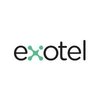
i
Vanenburg
Filter interviews by
Vanenburg Interview Questions and Answers
16 Interview questions
Machine learning algorithms are used to make predictions or decisions based on data.
Linear Regression: used for predicting continuous values based on input features.
Logistic Regression: used for binary classification tasks.
Decision Trees: used for classification and regression tasks, creating a tree-like model of decisions.
Random Forest: ensemble learning method using multiple decision trees for improved accuracy.
...
4 pillars of OOPs are Inheritance, Encapsulation, Abstraction, and Polymorphism.
Inheritance: Child classes inherit attributes and methods from parent classes. Example: Animal -> Dog
Encapsulation: Bundling data and methods that operate on the data into a single unit. Example: Class with private variables and public methods
Abstraction: Hiding complex implementation details and showing only necessary features. Exa...
Machine learning is teaching computers to learn from data and make decisions without being explicitly programmed. Deep learning is a subset of machine learning that uses neural networks to mimic the human brain.
Machine learning is like teaching a child to recognize different fruits by showing them pictures and telling them the names.
Deep learning is like teaching a child to recognize different fruits by showing th...
Sort a list of 0s, 1s, 2s using brute force and optimized methods with time and space complexity analysis.
Brute force method: Count the occurrences of 0s, 1s, and 2s and reconstruct the array accordingly.
Optimized method: Use Dutch National Flag algorithm to partition the array into three sections based on 0s, 1s, and 2s.
Time complexity: Brute force - O(n), Optimized - O(n)
Space complexity: Brute force - O(1), Opt...
The 3-sum problem finds triplets in an array that sum to zero, solvable via brute force or optimized methods.
Brute Force: Check all triplet combinations using three nested loops. Time complexity: O(n^3).
Optimized: Sort the array, then use two pointers to find pairs that sum to the negative of the current element. Time complexity: O(n^2).
Example: For array [-1, 0, 1, 2, -1, -4], the triplets are [-1, 0, 1] and [-1,...
Transactional annotation is used in Spring framework to manage transactions in a declarative way.
Transactional annotation is used to define the scope of a single database transaction.
It ensures that if any operation within the transaction fails, the entire transaction is rolled back.
It simplifies the code by handling transaction management automatically.
It can be applied at class level or method level in Spring ap...
Iterate through the array to find the second largest number.
Iterate through the array and keep track of the largest and second largest numbers.
Compare each element with the largest and second largest numbers to update them accordingly.
Return the second largest number once the iteration is complete.
Design a database schema for an employee database
Create a table for employees with fields like employee_id, name, department, position, etc.
Consider adding tables for departments, positions, and any other related entities
Include relationships between tables using foreign keys
Ensure data integrity with constraints like unique keys and not null constraints
Factory design pattern is a creational pattern that provides an interface for creating objects in a superclass, but allows subclasses to alter the type of objects that will be created.
Factory design pattern is used to create objects without specifying the exact class of object that will be created.
It provides a way to delegate the instantiation logic to child classes.
One example is the Factory Method pattern, wher...
Use a loop to iterate through the string and count the occurrences of the given character.
Iterate through the string using a loop
Check each character if it matches the given character
Increment a counter if a match is found
Return the counter as the frequency of the given character
Vanenburg Interview Experiences
10 interviews found
I appeared for an interview in Aug 2024.
General aptitude questions like numerical problems and logical reasoning were asked. To be answered in 45 minutes. Another 30 minutes were provided to answer technical MCQs based on finding output of given Java code, programming related MCQs, and some database questions
(9 Questions)
- Q1. What is NoSQL? Do you have experience with NoSQL databases?
- Ans.
NoSQL is a type of database that provides a mechanism for storage and retrieval of data that is modeled in means other than the tabular relations used in relational databases.
NoSQL stands for 'Not Only SQL' and is a non-relational database management system.
NoSQL databases are schema-less, allowing for flexibility in data storage and retrieval.
Examples of NoSQL databases include MongoDB, Cassandra, and Redis.
- Q2. Self intro and projects
- Q3. Explain machine learning and deep learning in layman terms with real-time examples
- Ans.
Machine learning is teaching computers to learn from data and make decisions without being explicitly programmed. Deep learning is a subset of machine learning that uses neural networks to mimic the human brain.
Machine learning is like teaching a child to recognize different fruits by showing them pictures and telling them the names.
Deep learning is like teaching a child to recognize different fruits by showing them pi...
- Q4. 4 pillars of OOPs with real time examples
- Ans.
4 pillars of OOPs are Inheritance, Encapsulation, Abstraction, and Polymorphism.
Inheritance: Child classes inherit attributes and methods from parent classes. Example: Animal -> Dog
Encapsulation: Bundling data and methods that operate on the data into a single unit. Example: Class with private variables and public methods
Abstraction: Hiding complex implementation details and showing only necessary features. Example:...
- Q5. Why use OOPs? Your proficiency in Java
- Ans.
OOPs allows for better organization, reusability, and flexibility in code. Java is a popular OOP language.
OOPs promotes code reusability through inheritance and polymorphism
Encapsulation helps in data hiding and protecting data integrity
Java supports OOP principles like encapsulation, inheritance, and polymorphism
OOPs allows for better organization of code into classes and objects
- Q6. Explain some machine learning algorithms that you know
- Ans.
Machine learning algorithms are used to make predictions or decisions based on data.
Linear Regression: used for predicting continuous values based on input features.
Logistic Regression: used for binary classification tasks.
Decision Trees: used for classification and regression tasks, creating a tree-like model of decisions.
Random Forest: ensemble learning method using multiple decision trees for improved accuracy.
Suppo...
- Q7. Difference between SQL and NoSQL. Which one is better?
- Ans.
SQL is a relational database management system, while NoSQL is a non-relational database management system.
SQL is table-based, with structured data and predefined schema (e.g. MySQL, PostgreSQL)
NoSQL is document-based, key-value pairs, wide-column stores, or graph databases, with dynamic schema (e.g. MongoDB, Cassandra)
SQL is better for complex queries and transactions, while NoSQL is better for large amounts of unstru...
- Q8. Sort a list of 0s,1s,2s using brute force and optimized methods. Explain it's time and space complexity
- Ans.
Sort a list of 0s, 1s, 2s using brute force and optimized methods with time and space complexity analysis.
Brute force method: Count the occurrences of 0s, 1s, and 2s and reconstruct the array accordingly.
Optimized method: Use Dutch National Flag algorithm to partition the array into three sections based on 0s, 1s, and 2s.
Time complexity: Brute force - O(n), Optimized - O(n)
Space complexity: Brute force - O(1), Optimize...
- Q9. 3 sum coding question with brute force and optimized solutions with time and space complexity
- Ans.
The 3-sum problem finds triplets in an array that sum to zero, solvable via brute force or optimized methods.
Brute Force: Check all triplet combinations using three nested loops. Time complexity: O(n^3).
Optimized: Sort the array, then use two pointers to find pairs that sum to the negative of the current element. Time complexity: O(n^2).
Example: For array [-1, 0, 1, 2, -1, -4], the triplets are [-1, 0, 1] and [-1, -1, ...
(5 Questions)
- Q1. Self intro and family background
- Q2. How to improve biometrics with latest technologies for employee attendance in company
- Ans.
Biometrics for employee attendance can be improved by integrating latest technologies like facial recognition and vein pattern recognition.
Implement facial recognition technology for accurate and fast attendance tracking.
Integrate vein pattern recognition for enhanced security and reliability.
Utilize AI algorithms to continuously improve biometric matching accuracy.
Explore touchless biometric solutions to promote hygie...
- Q3. Tell me about your friends and what qualities you admire in them. How did you inculcate those qualities in yourself?
- Ans.
My friends are supportive, loyal, and ambitious. I admire their positive attitudes and work ethic.
Supportive - always there to offer help and encouragement
Loyal - stand by me through thick and thin
Ambitious - motivated to achieve their goals
Positive attitude - see the bright side in every situation
Work ethic - dedicated and hardworking
Inculcated qualities by surrounding myself with positive influences and emulating the...
- Q4. Where do you see yourself in next 10 years?
- Ans.
In the next 10 years, I see myself growing into a senior software engineer role, leading projects and mentoring junior developers.
Continuing to enhance my technical skills through ongoing learning and certifications
Taking on more responsibilities in project management and team leadership
Mentoring and guiding junior developers to help them grow in their careers
Possibly pursuing a higher degree or specialization in a spe...
- Q5. What is your long term and short term goal?
- Ans.
My short term goal is to gain experience and improve my technical skills. My long term goal is to become a senior software engineer and lead a team.
Short term goal: Gain experience through hands-on projects and learning opportunities
Short term goal: Improve technical skills by staying updated with latest technologies and tools
Long term goal: Become a senior software engineer by taking on more challenging projects and r...
Interview Preparation Tips
Normal Aptitude and Basics of the Computer Core Questions
(2 Questions)
- Q1. Tell about Yourself
- Ans.
I am a software developer with 5 years of experience in developing web applications using Java, Spring Boot, and Angular.
5 years of experience in software development
Proficient in Java, Spring Boot, and Angular
Strong problem-solving skills
Experience working in Agile development environment
Passionate about learning new technologies
- Q2. Write the code abt the right binary tree?
(1 Question)
- Q1. Normal Hr Questions
Skills evaluated in this interview
I applied via Campus Placement and was interviewed in May 2024. There were 2 interview rounds.
General aptitude questions and technical questions
(2 Questions)
- Q1. Array data structure based programming question
- Q2. Object Oriented Programming concepts
(2 Questions)
- Q1. Describe OOPs with a real world example using your understanding.
- Ans.
OOPs is a programming paradigm based on the concept of objects, which can contain data in the form of fields and code in the form of procedures.
OOPs focuses on creating objects that interact with each other to solve a problem.
Encapsulation, inheritance, and polymorphism are key principles of OOPs.
Example: In a car manufacturing company, a 'Car' object can have properties like 'model', 'color', and methods like 'startEn...
- Q2. Programming exercises to demonstrate design and architecture knowledge
(1 Question)
- Q1. Questions that will prove your commitment and integrity.
Interview Preparation Tips
I applied via Recruitment Consulltant and was interviewed in Nov 2023. There was 1 interview round.
(6 Questions)
- Q1. Find the second largest number in an given array?
- Ans.
Iterate through the array to find the second largest number.
Iterate through the array and keep track of the largest and second largest numbers.
Compare each element with the largest and second largest numbers to update them accordingly.
Return the second largest number once the iteration is complete.
- Q2. Find the frequency of given character in the given string?
- Ans.
Use a loop to iterate through the string and count the occurrences of the given character.
Iterate through the string using a loop
Check each character if it matches the given character
Increment a counter if a match is found
Return the counter as the frequency of the given character
- Q3. What is the spring boot and java version used in your project?
- Ans.
We are using Spring Boot 2.5.3 and Java 11 in our project.
Spring Boot version: 2.5.3
Java version: 11
- Q4. What is the use of transactional annotation?
- Ans.
Transactional annotation is used in Spring framework to manage transactions in a declarative way.
Transactional annotation is used to define the scope of a single database transaction.
It ensures that if any operation within the transaction fails, the entire transaction is rolled back.
It simplifies the code by handling transaction management automatically.
It can be applied at class level or method level in Spring applica...
- Q5. Design employee database schema
- Ans.
Design a database schema for an employee database
Create a table for employees with fields like employee_id, name, department, position, etc.
Consider adding tables for departments, positions, and any other related entities
Include relationships between tables using foreign keys
Ensure data integrity with constraints like unique keys and not null constraints
- Q6. What is factory design patterns and give one example for it
- Ans.
Factory design pattern is a creational pattern that provides an interface for creating objects in a superclass, but allows subclasses to alter the type of objects that will be created.
Factory design pattern is used to create objects without specifying the exact class of object that will be created.
It provides a way to delegate the instantiation logic to child classes.
One example is the Factory Method pattern, where a s...
Skills evaluated in this interview
Test was fairly simple consisting of basic cse concepts
I applied via Campus Placement and was interviewed in Sep 2024. There were 2 interview rounds.
It was a 35 Questions Aptitude round and 15 Technical Questions.
Since it was an on campus event, It was in my college premises.
The second round was Coding+Technical a F2F round. Mine was lasted for 1 hr 40 mins.
I applied via Job Portal
Mcqs based on aptitude and cs fundamentals
(1 Question)
- Q1. Insertion sort,merge sort,array sum using recursion,puzzles,DBMS
(1 Question)
- Q1. About latest technologies like cloud computing
Interview Preparation Tips
like cloud computing and good basic knowledge in DSA
Array sorting,selection sort,insertion sort
Technical questions bacsic array questions
I applied via Campus Placement and was interviewed in Jul 2023. There were 3 interview rounds.
Basic quantitative, logical reasoning along with few technical questions
(1 Question)
- Q1. Core subjects on opps, Ds, and resume based
(1 Question)
- Q1. Tell me about yourself
Top trending discussions






Vanenburg Interview FAQs
Tell us how to improve this page.
Vanenburg Interviews By Designations
- Vanenburg Associate Software Engineer Interview Questions
- Vanenburg Software Developer Interview Questions
- Vanenburg Senior Engineer Interview Questions
- Vanenburg Associate Software Developer Interview Questions
- Vanenburg Software Engineer Interview Questions
- Vanenburg Java Developer Interview Questions
- Vanenburg Solution Architect Interview Questions
Interview Questions for Popular Designations
Overall Interview Experience Rating
based on 11 interview experiences
Difficulty level
Duration
Interview Questions from Similar Companies
Vanenburg Reviews and Ratings
based on 28 reviews
Rating in categories
|
Associate Software Engineer
19
salaries
| ₹6 L/yr - ₹8.7 L/yr |
|
Software Engineer
12
salaries
| ₹8 L/yr - ₹17 L/yr |
|
Product Architect
8
salaries
| ₹35 L/yr - ₹38 L/yr |
|
Testing Engineer Lead
7
salaries
| ₹14.3 L/yr - ₹16.3 L/yr |
|
Software Engineer II
7
salaries
| ₹9.6 L/yr - ₹13 L/yr |

Exotel

Azuga Telematics

Shell Recharge Solutions

Flixstock
- Home >
- Interviews >
- Vanenburg Interview Questions













